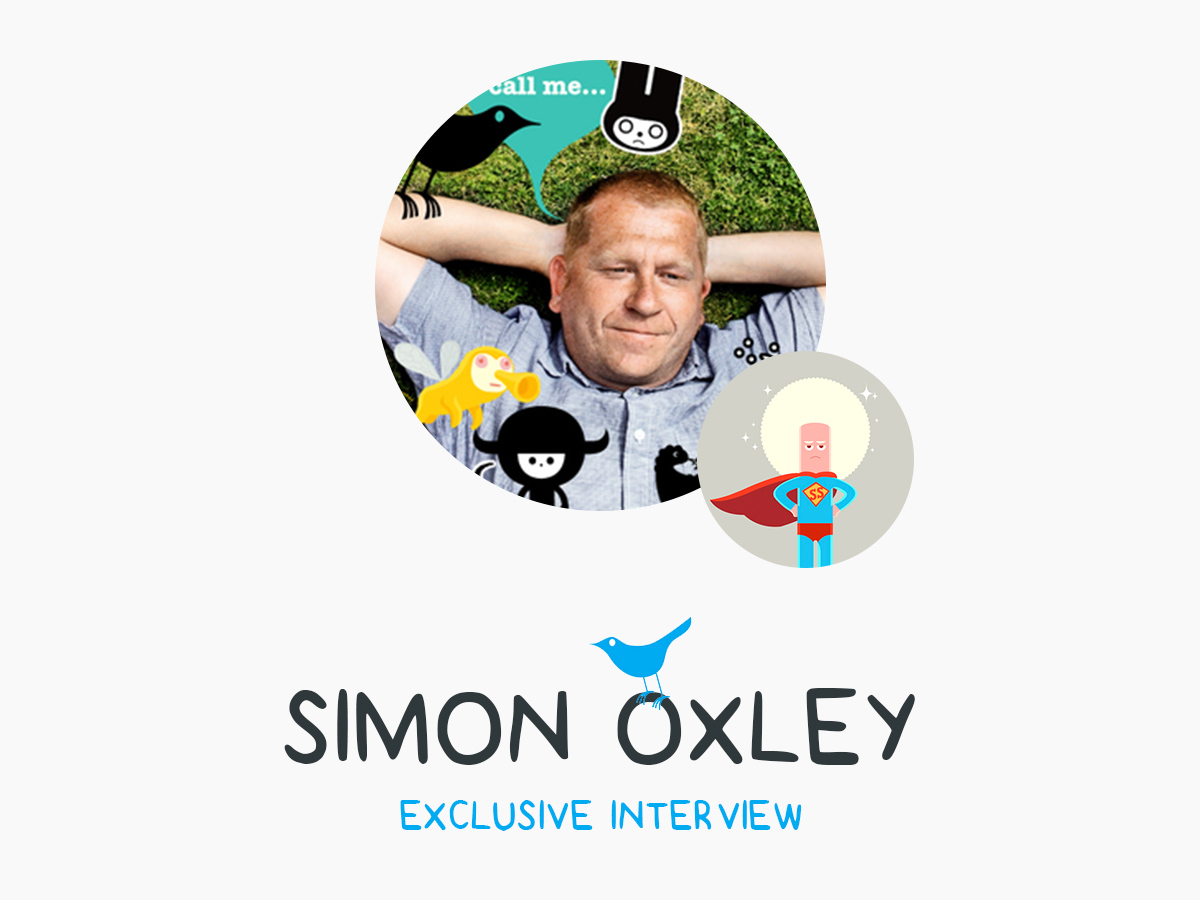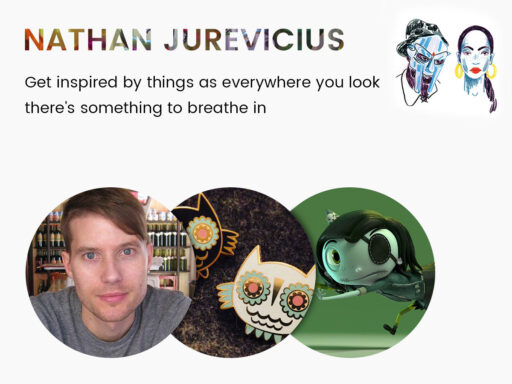Folks in graphic design usually recognize Simon Oxley as the skilled and creative British illustrator and designer. His passion in design made him gain good experience in crafting logos, illustrations, character mascots and even masks for Japanese Kabuki theatre.
He made logos for Github, Twitter, iStockphoto, and many more well-known names on the Web. Today Simon works as the freelance designer and dreams of sculpting and selling models and masks in the closest future. Let’s have a chat with Simon.
1. Will you please share a bit about yourself and your scope of activities?
I am a 47yr old husband and father to 2 boys now in their teens. We live in Oxford UK – surrounded by the crusty old buildings with their famous spires and a very diverse community of folks from all quarters of the planet.
I work from home on a Mac, which is now very slow and getting old – I receive requests for character mascots mostly these days, generally beginning contracts with freehand sketching and idea development until the client has settled on their favourite direction. Being freelance can be a bit frightening when contracts dry up for periods of time, although I am fortunate to receive requests from all sorts of people developing their businesses in various fields, mostly tech firms.
While living in Japan, and traveling I developed a keen interest in photography and like to edit shots sometimes adding some graphic elements to the scene or object. Using a Canon 5D Mk2 I can capture images with great detail and share them through the popular stock sites like iStock and Shutterstock. The stock sales used to be a major revenue stream but times have changed and I now rely less on this for income.
As well as drawing I enjoy making strange masks using firstly plasticine. To make the mould which I then produce a Silicon rubber mould from – then cast the mask in plaster. I was inspired by the masks which can be seen all over Japan used traditionally in their Kabuki theatre performances – The local museums in Oxford contain collections of carvings from Africa Asia etc, which always hold my attention and inspire me to make my own character
forms.

2. What passions got you into graphic design and why?
I always enjoyed drawing like many kids – and read a lot of comic books which contained amazing imagery such as 2000AD Judge Dredd, Beano, Cor!! annuals which stimulated my drawing activities – I would always be making something from all sorts of materials – I attended 2 art and design colleges in the UK – the first gave me a general introduction to life drawing and photography as well as excellent tutoring from very experimental teachers. I then studied graphic design on a 2 yr course by the seaside on the south coast, Bournemouth College of art and design.
While there I dug deeper into the arts and was lucky enough to attend lectures from visiting graphic design superstars like Saul Bass, who designed well known movie titles such as ‘Cat on a hot tin roof’ as well as designing some very well known logo marks.
3. Please tell a brief story of a Twitter bird logo creation. There are rumors you sold it for a few dollars on a stock photo website. Is it true?
Living in Japan I was exposed to the cleverest icons and crafts I had ever seen – this exposure inspired me to attempt to create shapes which while being minimal had some element of interest and communicated balance and weight – I made many icons in this way, the bird chosen by Twitter was one of these icons – I placed it on various scenes and uploaded the vector artwork to the stock sites – I was lucky to have Twitter use the bird since it raised my profile and probably made people feel confident to hire me.
4. Please name a few well-known companies you designed a logo for. What are they in?
After being a member of iStockphoto for a year or so i contacted the CEO, Bruce Livingstone through email and became friends meeting in Tokyo when he was there to give a speech from time to time – he asked me to design the logo for the company which I did – eventually the site was bought out by Getty images who changed the logo, but not before it had aired for a number of yrs – They also use my illustration of a figure holding an arial when contributors upload their shots.
I redesigned the Bitly Pufferfish and the shark mascot for Digital Ocean – I tend to work mainly for US and Asia based firms and individuals. Recently i am approached by individuals who run start-up companies who don’t have a budget for graphics, so pricing can be tricky.
5. How would you call a style of your illustrations, is there any word or phrase that describes your works the best?
Perhaps Character Mascot, which includes humour, fun and vivid colour with themes I hold a curiosity for. To summarise I would title my style: Fun with Frrrrr

6. When you moved from Britain to Japan, what were the cultural or mentality challenges you probably had to come across while living in this Eastern country?
Of course language was the major challenge to overcome – as well as cultural nuisances – I was lucky to be welcomed by my wife’s family who made my stay there great fun, with visits to hot springs and places of interest which I may not have explored without them. I also had a contact in Tokyo who ran a multimedia company based slap bang in the centre of the pop culture mecca, Harajuku – after a couple of months working for beer and food I gained a visa which allowed me to become an official part of the team which included experts in code who made websites – this was 1999, the beginning of the .com boom – a very exciting period to be designing – I handled the print design of annual reports which opened doors to some of Japans largest firms such as Honda, Mazda, Yamaha Instruments etc – I would visit the towns where these companies were often the biggest employer and meet with my client and their heads – lots of Karaoke and beer and peanuts were involved.
7. If you weren’t a graphic designer what would you do for living? Let’s imagine.
Perhaps model making? Carpentry? I really enjoy physical tasks such as building with stone and cement, wood – especially when the weather is clement – I yearn to acquire a work shop which allows space to use noisey power tools and make lots of dust. As I get older I do feel like the change of career may be forced on me – If I cannot make an income in graphics I need to diversify my offering which is probably why i am spending time developing skills in sculpting – my dream is to sell the models and masks.
8. Is there any advice from you for a newbie in graphic design?
Always find offering advise difficult since each individual has their own interests which are uniquely reflected in their work – on a practical level, try to gain mentoring within a great design agency – this foundation will provide you with a good base for any paths in design you chose in your future.







Thank you for the opportunity to tell my story so far Mel – all the best to you and your audience
Simon!
It\’s a pleasure to post the interviews like yours, about talanted people. Thanks